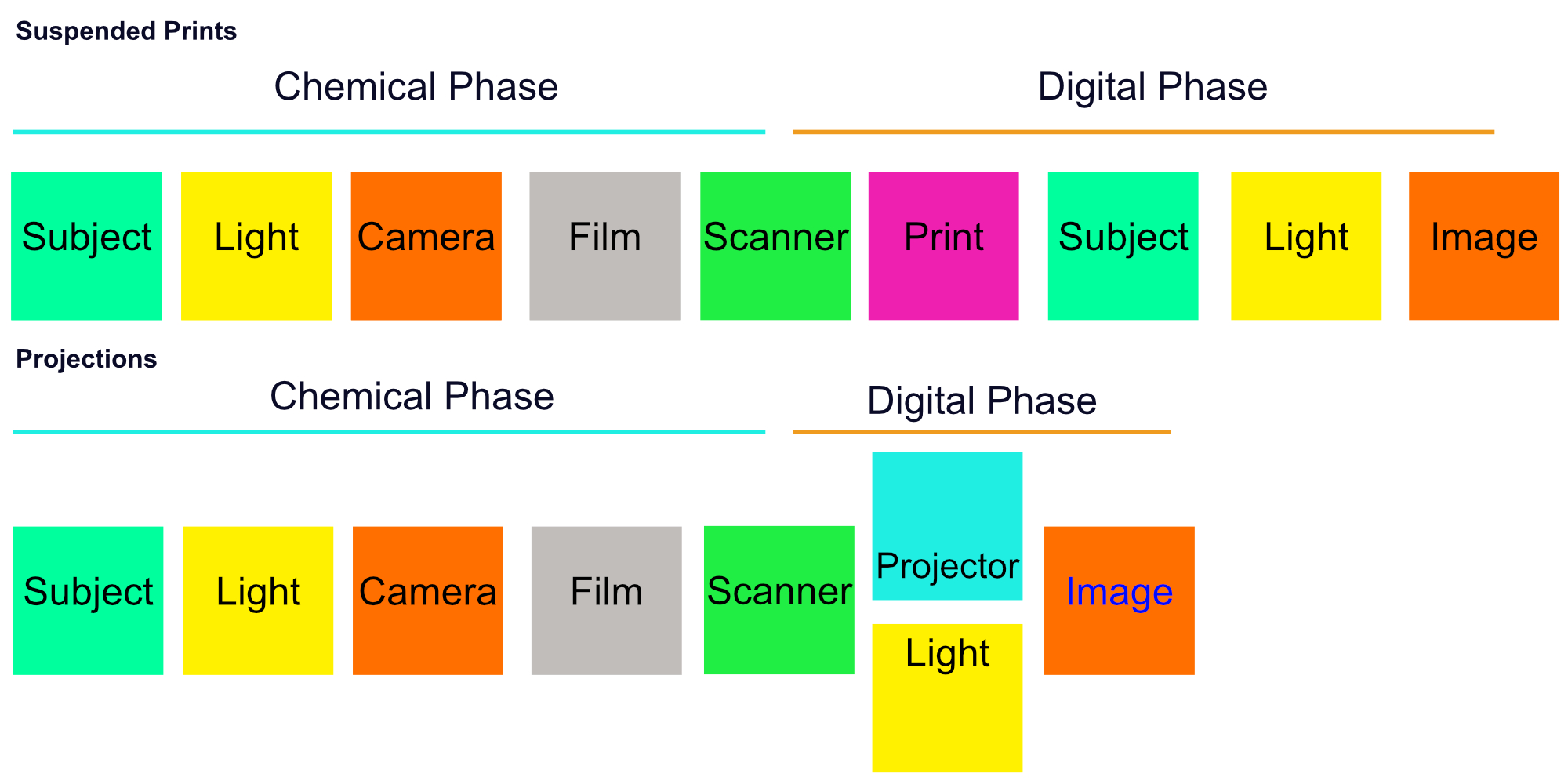I’m having to consider the difference between printed matter and beamed light as I switch up my route towards the Other Mothers project. Proper consideration will also, I hope, enable me to get best use out of my small, turquoise-cased, projector.
My starting point has been to look purely at the differences in the process towards a resulting Other Mothers Image.

First of all I’m immediately struck by the overall length of the process which, when you allow for the time back to when the original photographs were made, spans decades.
A important aspect however in the projection route is the narrowing of process between the film-based media with which I am working and my own end result, and the significant shortening of the digital phase (from scanning to digital file to the creation of a new digital file on my camera).
But perhaps the most important factor of all is the dual event of the projected image merging with ambient light in the process of image formation. The projection of each mother will become both the subject of the image and the means by which it is made. It becomes an active agent in the process/ A suspended print, on the other hand, remains a passive subject, dependent on light to create an image in which it is a subject.
This matters because my intention with these images is to join the past with the present, and to explore how I have been ‘made’ by these women. They were active agents in that process. And while these images of them were taken many years ago, my Other Mothers are immediate and present in my life, even in their absence.
So, two things can potentially happen as a result of projecting.
- The process better reflects the subject matter per se of the project
- The process better reflects the sense of immediacy and immanence in terms of the stature of these women in my life
The intention with these projections is to take my Other Mothers and project them in resonant locations.

I’ve found the work of Wonjun Jeong very interesting in terms of approach. In his series “Conversations”, Wonjun projects images of series of faces onto a white sheet seemingly tossed into the air at dusk. We don’t know who these people are (though one strongly resembles the artist himself) but the title, the partial and transient moments of facial recognition and the fact they are all taken at the temporal border between night and day suggests something of the potential beauty of fleeting encounters.
They are aesthetically beautiful, for sure, but my own project is about the tenderness shown by my Other Mothers to my fractured roots and in places that resemble my memories places in which that healing took place.
My ‘surfaces’, which will receive the projections, must be of something altogether more solid.
More interesting (and earthy!) is John Clang’s Being Together series in which families are brought together via projection (of video conferencing).

Clang’s work focuses on the scattered nature of many modern families living, as they often do, around the world. They are brought together, using technology and projection, for the purpose making an image.
It provides both a revealing insight into modern families and an ironic side-ways nod at the ridiculousness of family gathering photographs. The way the participants move to ensure the picture looks ‘right’ shows that, when such pictures being made, it is really all about the picture and perhaps slightly less about the family.
And yet, there is also something very endearing in the questions Clang’s images ask us: Are these screened bonds any less ‘real’ for their lack of physical presence? Are they any less of a family for not being in the same room at the same time? Does the fact that all members are participating in the formation-game of the image highlight the emotional closeness and dependability of the family members involved?
For my purposes and for my project Clang’s work is important in how projection can transcend space (and hopefully time) given that I am currently unable to photograph my Other Mothers in person.
References:
GNANT. (2017). Wonjun Jeong Captures Conversations In The Sky. [online] Available at: https://www.ignant.com/2017/06/28/wonjun-jeong-captures-conversations-in-the-sky/.
LensCulture, J.C. | (n.d.). Being Together – Photographs and text by John Clang. [online] LensCulture. Available at: https://www.lensculture.com/articles/john-clang-being-together.
Howarth, S. and Mclaren, S. (2016). Family photography now : with over 320 photographs in colour and black and white. London Thames Et Hudson.




